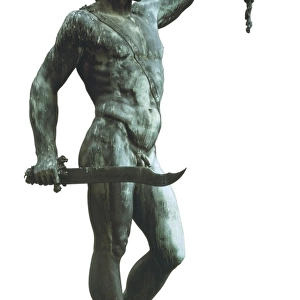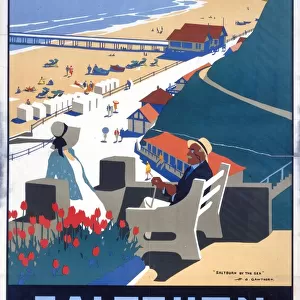Home > Europe > United Kingdom > England > Cleveland
Apollo, 1588. Creator: Hendrick Goltzius (Dutch, 1558-1617)
![]()

Wall Art and Photo Gifts from Heritage Images
Apollo, 1588. Creator: Hendrick Goltzius (Dutch, 1558-1617)
Apollo, 1588. This engraving depicts Apollo as the radiant sun god. With fire-like hair, he strides through rolling waves of clouds, while in the background his chariot makes its daily trip across the sky. The Latin text that forms his halo translates: " With its aureole and shining ray, the bright Sun drives away the darkness and lights the whole earth." Apollos excessively muscled body reflects an aspect of Mannerism, a stylistic trend in the mid- to late 1500s that exaggerated natural qualities. By over embellishing Apollos musculature, Goltzius transformed an athletic male body into a supernatural one
Heritage Images features heritage image collections
Media ID 19616694
© Heritage Art/Heritage Images
1558 1617 Hendrick Goltzius Hendrick Goltzius Dutch
FEATURES IN THESE COLLECTIONS
> Arts
> Art Movements
> Mannerism
> Europe
> Netherlands
> Posters
> Europe
> Netherlands
> Related Images
> Europe
> United Kingdom
> England
> Cleveland
EDITORS COMMENTS
This print showcases Hendrick Goltzius' masterpiece, "Apollo, 1588". The engraving depicts the majestic Apollo as the radiant sun god, exuding power and brilliance. With his fiery hair flowing behind him, he confidently strides through rolling waves of clouds. In the background, his chariot embarks on its daily journey across the sky. The Latin text forming Apollo's halo translates to: "With its aureole and shining ray, the bright Sun drives away the darkness and lights the whole earth". This inscription emphasizes Apollo's divine role in illuminating and bringing warmth to our world. Goltzius' portrayal of Apollo reflects a stylistic trend known as Mannerism prevalent during the mid- to late-1500s. By exaggerating natural qualities, such as Apollos excessively muscled body, Goltzius transforms an athletic male physique into something supernatural. This artistic choice adds an ethereal quality to Apollo's presence. As we gaze upon this remarkable piece of art from Heritage Art/Heritage Images at The Cleveland Museum of Art (not affiliated with any company), we are transported back in time to witness a celestial deity in all his glory. It is a testament to Goltzius' skill that even centuries later, this engraving continues to captivate viewers with its beauty and mythical allure.
MADE IN AUSTRALIA
Safe Shipping with 30 Day Money Back Guarantee
FREE PERSONALISATION*
We are proud to offer a range of customisation features including Personalised Captions, Color Filters and Picture Zoom Tools
SECURE PAYMENTS
We happily accept a wide range of payment options so you can pay for the things you need in the way that is most convenient for you
* Options may vary by product and licensing agreement. Zoomed Pictures can be adjusted in the Cart.









